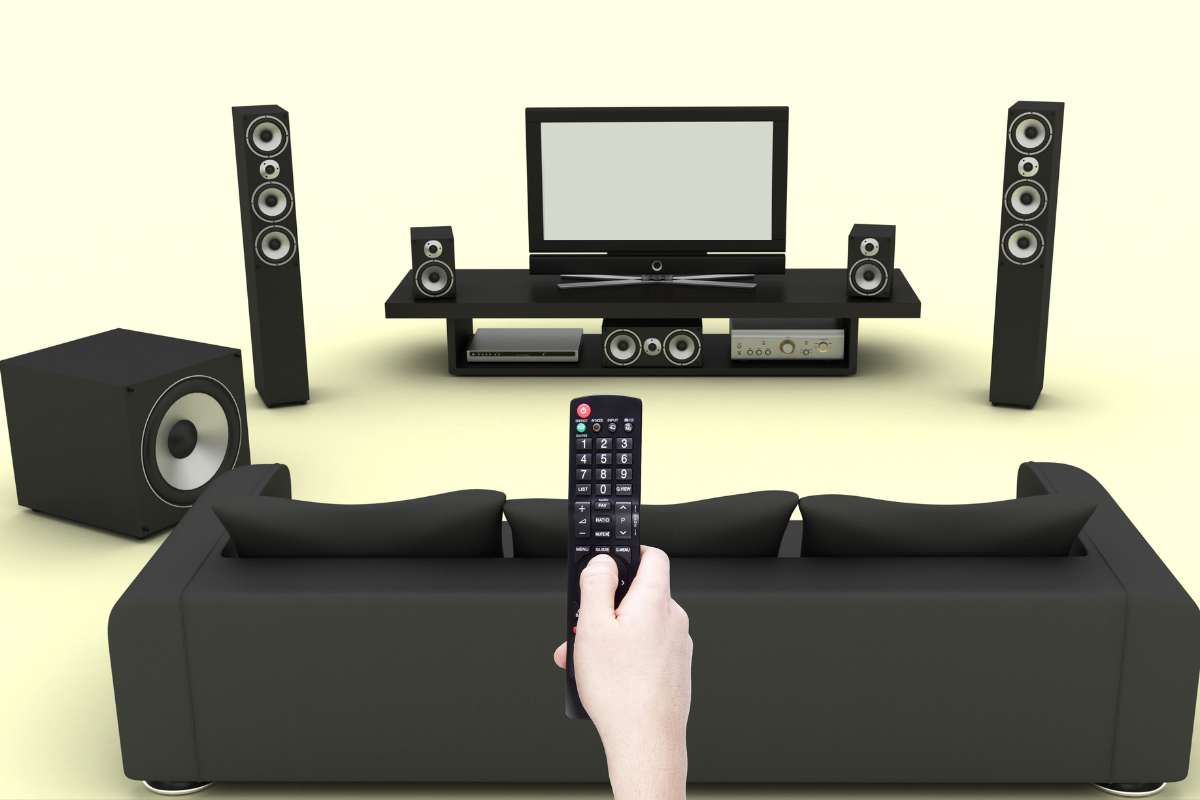Why You Should Own A Multi Channel Home Theatre
A terrific all-in-one solution for creating a movie theatre-like environment at home is to purchase a multi channel home theatre system. Multichannel home theatre systems may produce ambient sound effects, turning your space into a mini-theatre and improving your show experience.
Detailed Breakdown Of Multi Channel Home Theatre
There are many things to think about and decide, which can be overwhelming and confusing for many people. From selecting the appropriate display device to deciding how many speakers to have and how to position them with the room acoustics in mind, there are many things to consider and decide.
Home theatre systems come in a wide variety of shapes and sizes, so I’ll give you a detailed breakdown of everything you should know about setting one up while also suggesting some of the top options for you to think about.
It’s Core Components
A multi-channel home entertainment system has numerous components. The AV receiver and speakers are the most important ones. You also need a suitable source, speaker cables, interconnects, and a display device to finish and operate your system.
The majority of music lovers choose to create their systems by purchasing the components individually since it gives you more control over your setup. However, if you want to make things easy, you can choose an HTiB (Home Theatre in a Box), which comes with everything you need in one convenient container. Due to its lower cost and simplicity of setup, this method is preferred by the majority of individuals.
Video Receiver
The AVR (audio-video receiver), which serves as the system’s brain, is a component of home theatre systems that also include speakers. As it is in charge of processing the audio files and supplying power to all of the speaker units, the device is also known as an AV preamp or an AV power amp.
Your home entertainment system will determine the sort of AVR you require. The speaker wattages, necessary amplification power, and a few other supplementary features are things you need to take into account.
Speaker
A multi channel home theatre system’s major component is the speakers. The left, right, centre, and surround speakers make up a modern multi-channel speaker set’s five speakers. Most people upgrade their 5-speaker setup with a subwoofer as well to improve sound quality and better reproduce bass.
A soundbar rather than several speakers are included with some systems. The stereo, multi-channel audio is delivered through several channels by soundbars, which are placed close to the display.
They are referred to as 5.1 systems since they include 5 speakers and 1 subwoofer. Users also like the 3.1 and 7.1 operating systems. The left, right, and centre speakers are included with the 3.1 systems instead of the surround speakers. The 7.1 systems, on the other hand, include an additional pair of surround speakers,
Source
You will want a supplier that enables an optimal surround sound standard that complements your sound system to operate a multi channel home theatre system. I refer specifically to the platform—such as a Blu-ray disc or an internet streaming service—on which the film is presented.
Multi-channel audio recordings are now supported by several online streaming services, including Netflix, Apple TV, Disney, and Amazon Prime. Nowadays, the majority of Blu-ray discs not only support several multi-channel audio formats but also 5.1 surround sound.
Multi-Channel Theatre Classified
Home theatre systems can be grouped in various ways. You can distinguish between wired and wireless home entertainment systems, to start. The absence of speaker wire and AVR in both is the most noticeable distinction between the two. Wireless technologies are therefore more practical, but you should be aware that they are never entirely wireless (the speakers still have to be plugged in). Additionally, if you compare the sound output of similar-priced wired and wireless systems, you’ll see that the former typically performs a little bit better.
Additionally, you can distinguish between HTiBs and specially constructed home theatre systems. People who don’t want to spend time searching for the ideal match should use HTiBs. You will only need to connect everything after receiving a box containing all the speakers and a matching AVR. Occasionally, you will also receive all the necessary wire and perhaps even a Blu-ray player. HTiBs are often inexpensive and offer performance that is comparable to the cost. You will need to succeed on your own if you want to perform at a high level. You must first find the speakers you prefer, and then the appropriate AVR for those speakers.
Typical wireless speaker systems only come with a soundbar and a subwoofer. The soundbar can take the place of certain channels in addition to the three front channels. For instance, certain soundbars may come equipped with two side-firing speakers that mimic surround sound. Some even have speakers that project upward to mimic the effects of height. So, technically, a soundbar and wireless subwoofer combination might be considered a 5.1 or even 7.1 wireless system.
Benefits
Better performance and a more engaging movie-watching experience are the syntagmas for all the benefits of owning a home theatre system. That is the main benefit of owning a home theatre system. People buy it and adore it for this reason. The performance you receive with a high-quality surround sound speaker system is not even close to what you can get from a set of bookshelf speakers or those two little speakers inside your TV. Alternatively, you can get surround sound using a soundbar.
Though, more than $1000 may be required to purchase an affordable home theatre system, a matching AVR, and all necessary extras. A high-end system may cost far more than $10,000 or even $100,000. Building a multi channel home theatre is a significant investment that calls for careful thought and planning but your viewing or listening experience is elevated to a whole new level by home theatre.
Final Words
We think having a multi channel home theatre system is essential. Although it is an expensive investment and the installation is rather difficult and time-consuming (or expensive if you choose expert installation), the results will astound you. The kind of progress that is possible is hard to fathom. The way you watch movies is genuinely changed by surround sound.














